
What if you were unable to…
Now is the moment where you get to fill in the blank.
To say that the last few years were full of change would be a gross understatement. And it seems as though the future is even more uncertain.
Not knowing what the next year or even month will bring, you have the ultimate choice to learn how to be more self-reliant. Not in a doomsday, ultimate prepping sort of way, but in a practical manner that makes existence in uncertain times a tiny bit easier.

If any part of you is concerned about planned or potential food shortages, money running amuck, or the uncertain terms of healthcare, you may be in the market for an emergency garden.
Even if you don’t have all the skills to get started you can learn as you go and do the best you can with what you’ve got.
Why You Should Start an Emergency Garden
An emergency garden is one that grows quickly with little effort.
It includes fresh greens that are loaded with nutrients (essential vitamins and minerals), just as much as it allows edible weeds to flourish.
Knowing what perennials (wild and cultivated) grow naturally, is a skill that can be gathered by anyone with any level of gardening experience.
An emergency garden can also harness the power of natural medicine or healing herbs. Many of which can be propagated by cuttings, rather than seeds. We’ll get to those in a moment.
Get Started By Asking Questions
Getting started with your emergency garden, you are going to have some questions.
Just to be clear, an emergency garden is not a survival garden.
A survival garden is a well thought out and organized plot of land that covers all of your dietary needs for an extended period of time.
An emergency garden, as the name implies, is a garden that can be grown quickly in times of need.
But first, ask yourself the following questions:
- Is my soil fit for gardening?
- Do I have seeds, or can I buy/trade what I need?
- Will there be enough rainfall, or will irrigation be necessary?
- What growing zone am I in? (It’s essential for first time gardeners to know.)
- Will I need compost or natural fertilizers to get started?
- What plants grow the fastest?
In order to have a successful garden, it’s beneficial to have some gardening experience.
My advice to you is to get it any way you can. Read articles, lots of them. Watch videos, collaborate with local gardeners and growers, and most of all, get your hands in the dirt and do the work.
The best way to learn about gardening is always through hands-on experience.
What To Plant In Your Emergency Garden
Speaking of the best, the easiest way to plant your emergency garden is directly in the ground. This assumes you have access to land, preferably a backyard space.
Preserving your harvest is a story for another time.
In general, an emergency garden should take care of your hunger as soon as possible.
While you are waiting for your seeds to emerge and mature, let me suggest that learning how to sprout them is an essential skill. One that is very easy to master.
Related reading: Quick and Easy Sprouting Guide: How To Sprout Vegetable Seeds
If you are going for the fastest, not necessarily the most calorie-rich foods, start with the following greens.
Many of them can be harvested in less than a month.
1. Arugula
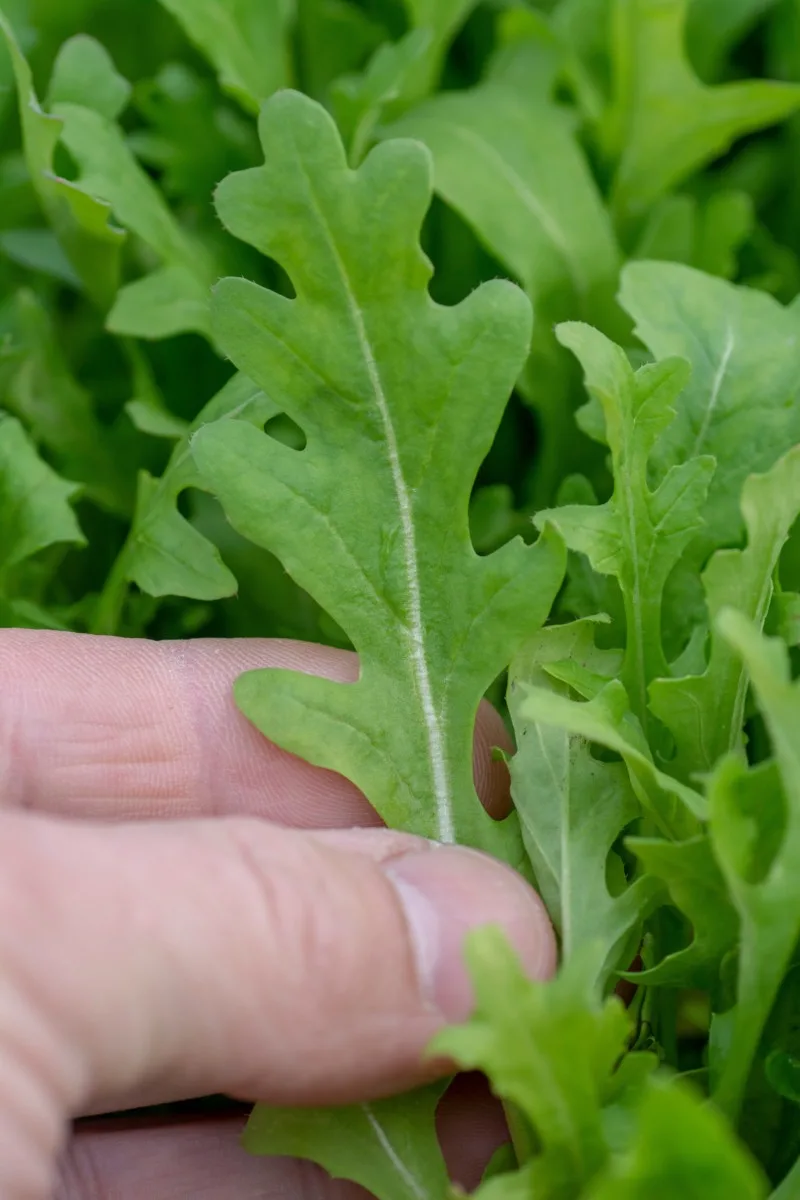
Anytime there is a chance to eat the whole plant, it deserves special attention. As is the case with arugula, or rocket, as it is more commonly known. The leaves are edible, as are the delicious and peppery flowers.
I consider it one of the easiest plants to grow (outside of a flea beetle infestation). All throughout the harvest, you get to pick the leaves individually, just as much as you need each day. At the end of the growing cycle, let the seeds fall on the soil and they will germinate from their own free will.
Rocket prefers full sun, yet it also tolerates partial shade.
Arugula can be grown from early spring till late fall, though it may be more difficult to grow in overly hot and dry summers.
Nutrition-wise, arugula is rich in minerals and vitamins: A, C, K, folate, potassium and magnesium. Essential elements for a healthy immune system. Prepare a salad with your own source of abundant chicken eggs and you have yourself a tasty meal. Dandelion greens are optional.
Read more: Fast-Growing Arugula – How To Grow, Harvest and Eat It
2. Beet Greens
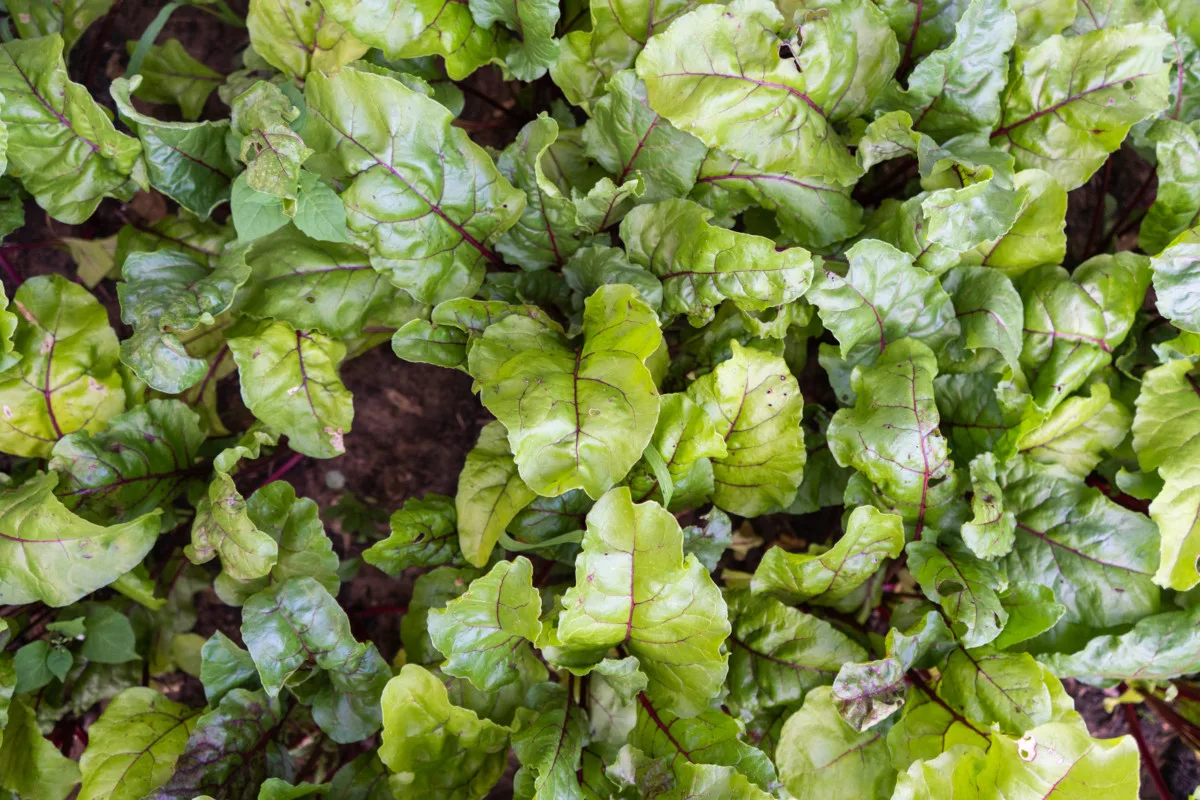
A lot of people out there really don’t like beets. I know, I’m one of them. What I do love, however, is their leaves which are far tastier than the taproots themselves.
Beet greens are an excellent source of Vitamin C, which again, boosts your immunity. If your aim is to survive, maintaining your good health is the only option. Beet greens also have sufficient amounts of iron, another element that benefits your health. And let’s not forget about Vitamin K, which plays an important role in blood clotting.
Besides, beet greens simply taste great.
Here are a couple of recipes to try out once you get your beet greens growing:
- Beet Green Chips from Essential Omnivore
- Stuffed Beet Greens Recipe with Meat and Rice from Gala in the Kitchen
- Beet Green Pesto from the Herbeevore
3. Chard
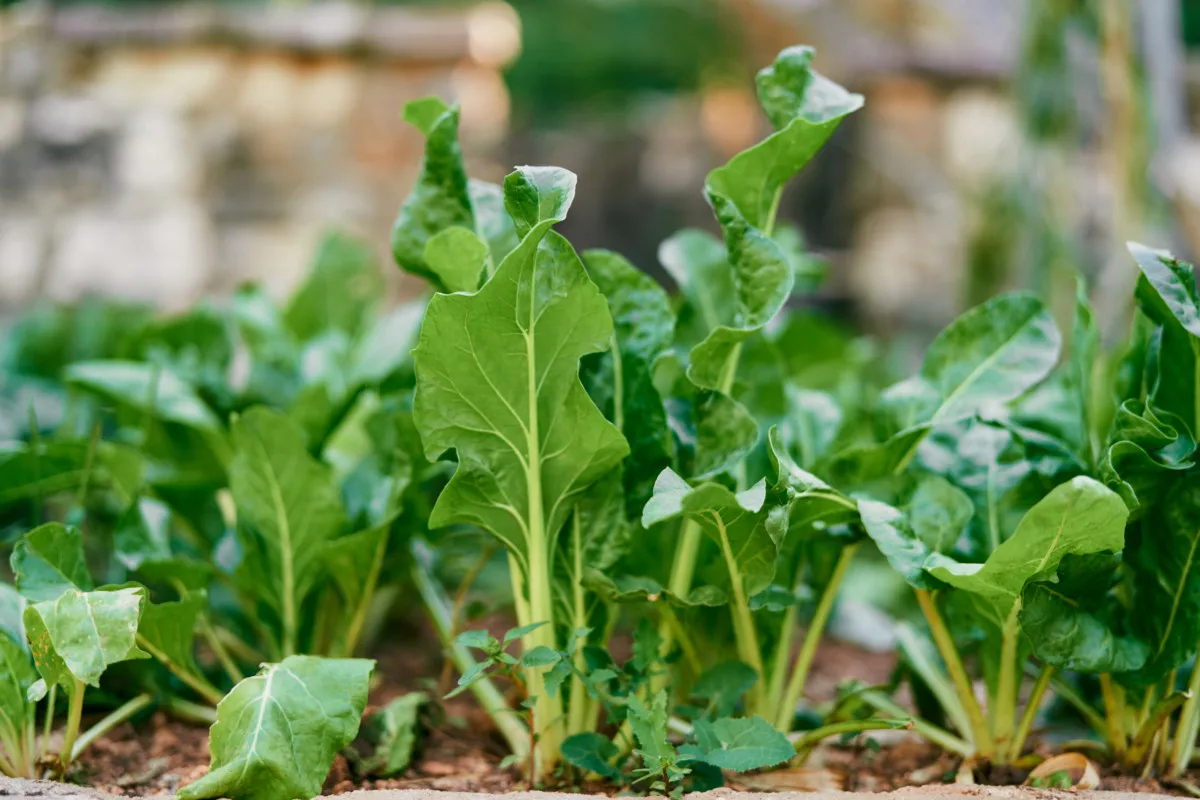
Another easy-to-eat leafy green is Swiss chard. If anything grows in the garden, it has got to be this one, especially if you live in a cooler climate.
Like most other leafy greens that can easily be grown in your emergency garden, chard is:
- rich in antioxidants
- full of vitamins: A, C, E, K, along with several B vitamins
- a good source of magnesium, potassium, iron and calcium
- low in calories
Chop it up and sauté it with bacon and mushrooms, add it to homemade pasta, make a pesto, toss some leaves in your smoothie, make chard chips.
If you’ve ever bought chard from the market, you might imagine that the leaves are small and tender. They can very well be that way. However, if you let them grow, an individual leaf can reach 2 feet or more. That’s a lot of leaf to chew on!
Another benefit is that most people won’t know what it is, thus having no reason to steal such an unassuming vegetable. Let alone, know how to cook with Swiss chard.
4. Green Onions
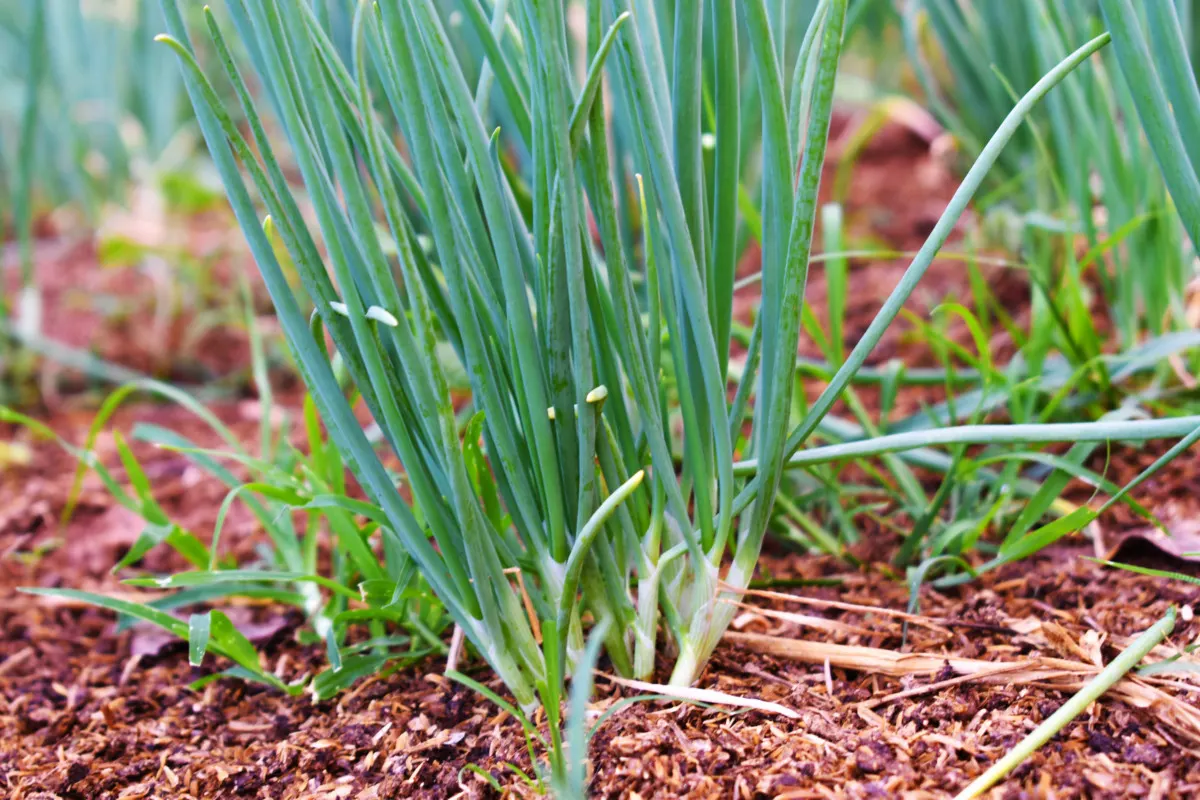
Green onions can easily be grown from sets and harvested all season long.
Every time you want to add some greens to the plate, simply pluck some leaves, give them a good rinse and serve them as you wish – chopped or whole. The green onion leaves will continue to grow all the way through the first frost.
While green onions prefer full sun, they are another crop that will do well enough in partial shade.
Onions can even be used as a companion plant to ward off insects and intruders of the 4-legged kind.
Once again, vitamins A, C, K, folate and B-complex vitamins play their respective parts in helping you stay healthy and strong.
5. Lettuce
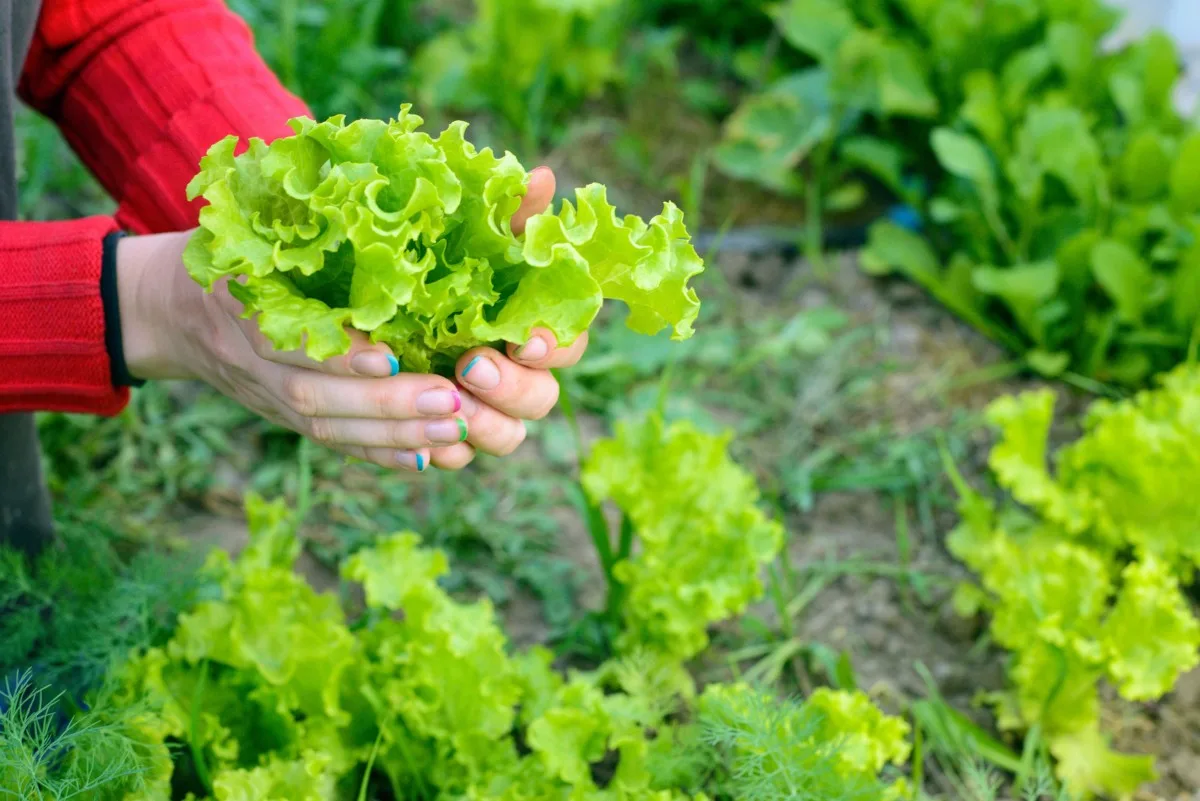
All things considered, lettuce is probably an overused and overeaten leafy green. Yet, it has its merits.
Lettuce is a nice cool-season crop that grows well at the beginning and the end of the growing season. It also lends itself to polyhouse or greenhouse cultivation.
There are also several varieties to grow, which means you don’t have to get bored with the same old Iceberg. Which, by the way, is one of the more difficult varieties to grow. Stick with leaf lettuce and you can sow some seeds here and there for an inconspicuous harvest.
6. Mizuna
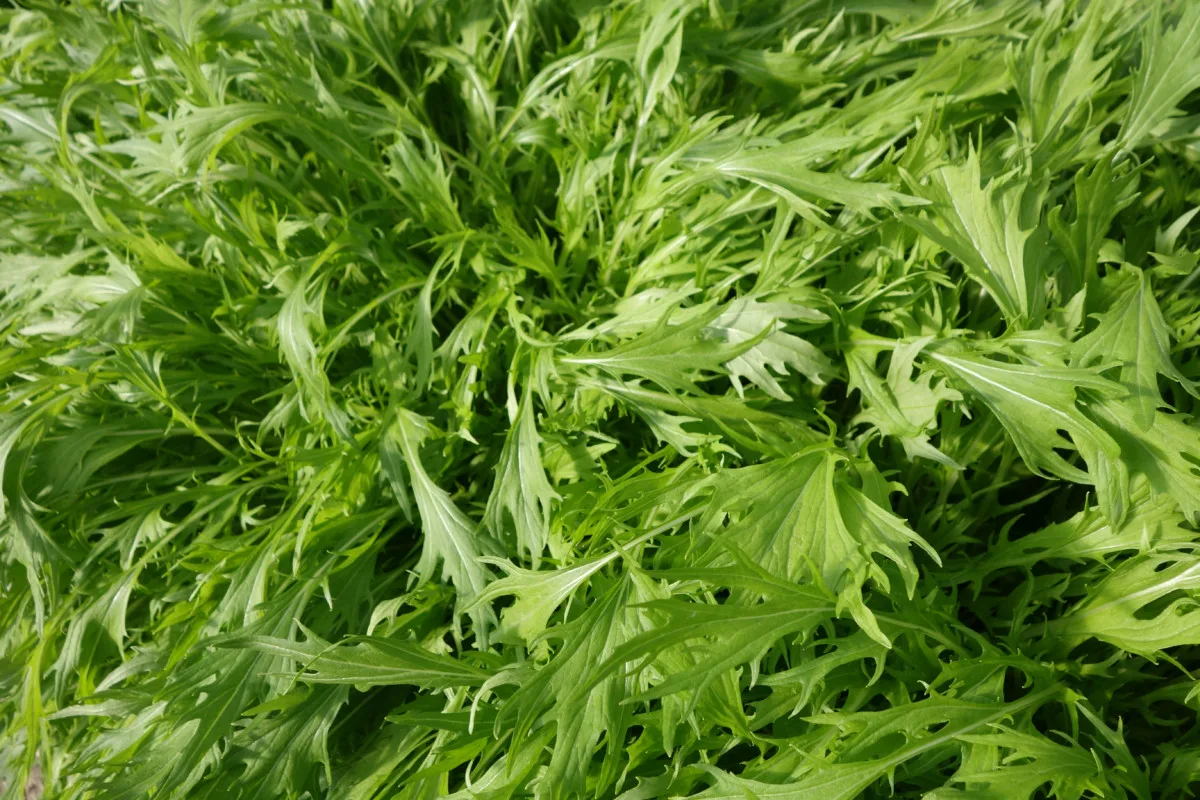
Any gardener should know that store-bought salad mixes are not the way to go.
The best is when you can head out to the garden and pluck as much as you need for a meal yourself.
If you have a choice, go for flavors and entertain the spicier side of life.
Mizuna does just that. Like rocket, it is slightly peppery and pleasantly bitter. If you aren’t getting enough bitter foods in your life, coffee with milk and sugar definitely doesn’t count, here are some compelling reasons why bitter is better.
What you need to know about mizuna, other than its amazing flavor, is that it is a biennial. This means you can leave the roots in the ground and harvest seeds in the second year.
When looking at the growth rate, baby greens are ready to harvest in 20 days. Full plants are harvestable at around 40 days. Grow it indoors or outdoors, plant where it works best for you.
7. Mustard Greens
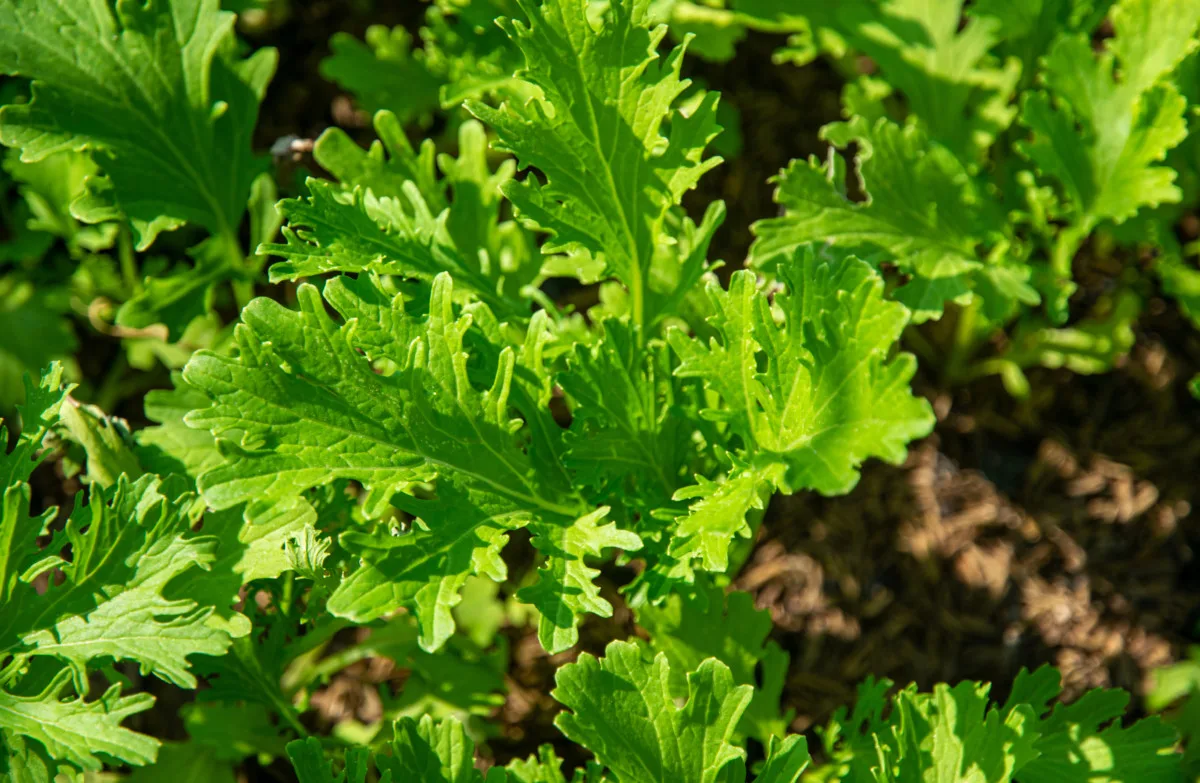
Another quick-growing green to add to the list is mustard greens. One serving contains nearly half of all your daily vitamin C needs. Combine that with some foraged plants and you are already good to go. Mustard greens also act as an expectorant that helps to clear nasal pathways, calming sinus inflammation and reducing the risk of asthma.
We aren’t going to go down the superfood route here, but mustard greens really are something to grow in your emergency garden. This article relating to 11 amazing health benefits of mustard greens says it all.
Plant it, eat it, compost it and enjoy your mustard greens for all they are worth. If they truly help fight off viral infections such as colds and the flu, you are on the bright end of a win-win situation.
8. Pea Shoots
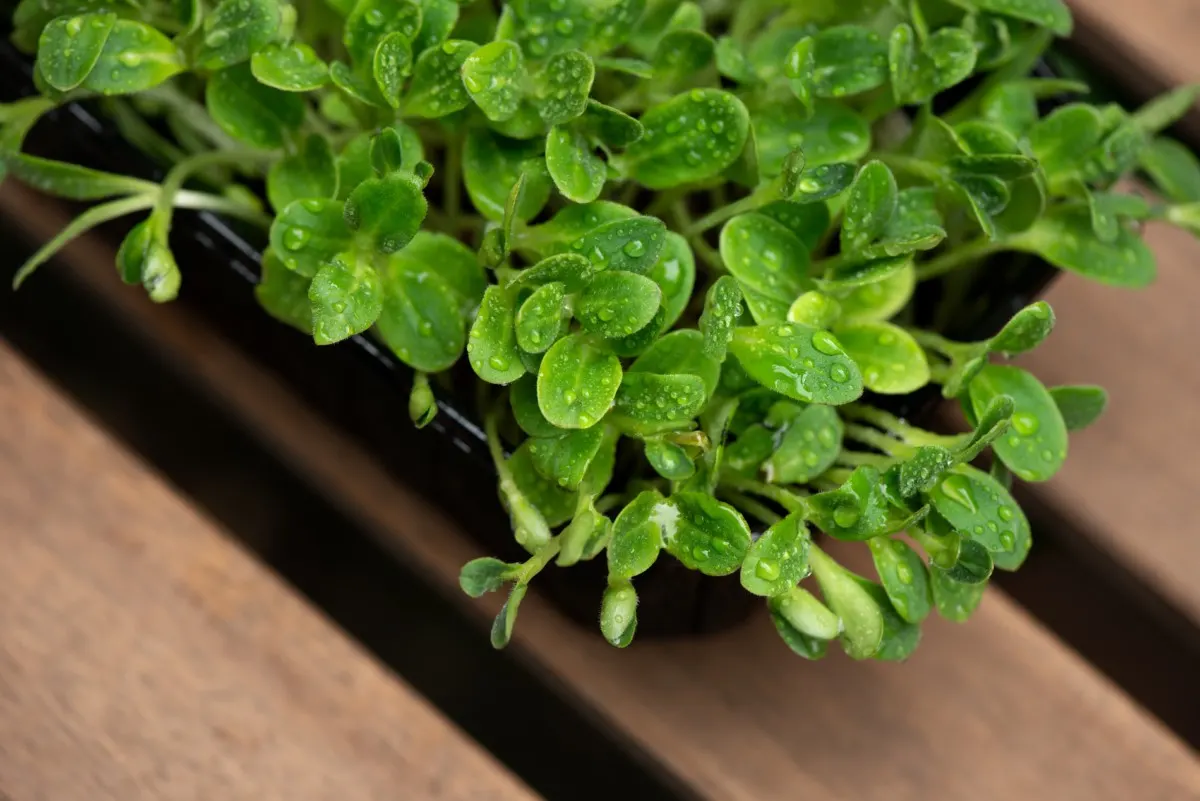
You did know that you can eat baby plants, right? Once shoots get past the stage of sprouts and microgreens, they become more nutritious than their full-grown counterparts.
One of the best parts about them, besides being ultra-easy to cultivate, is that they can be grown indoors, or out.
According to some research, pea shoots can reduce your risk of heart disease as they fight inflammation in the body. Better than that, they contain generous amounts of vitamins and minerals:
- 132% of your daily vitamin K
- 35% of your daily vitamin C
- 15% vitamin A
- 8.75% vitamin E
- 10% folate
- 7% riboflavin
- 5.75% thiamin
- 4.75% vitamin B-6
In a large tray, you can grow a lot at once. Alternatively, you can sow a new batch each week, or every other week, planting only as much as you need at a time.
Harvest time varies from 2 weeks to a month.
9. Pok Choi or Bok Choy
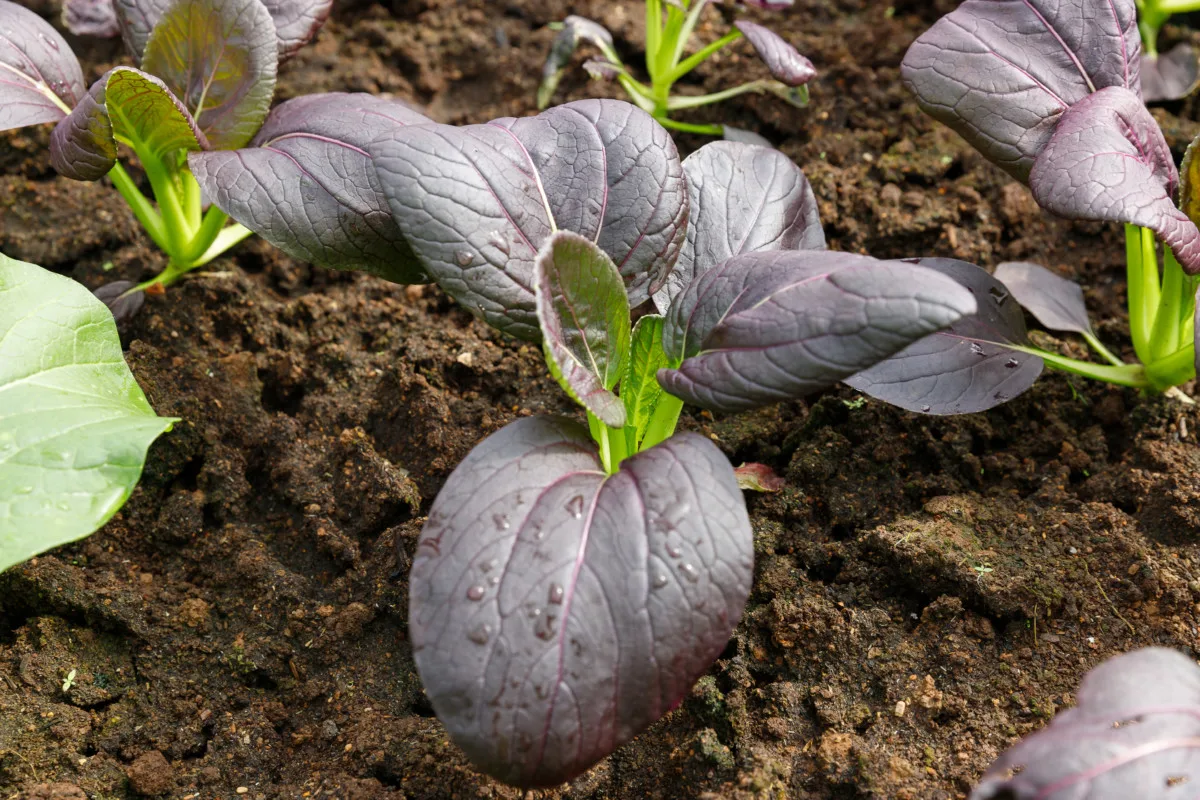
One and the same, also known as Chinese celery cabbage, Bok choy is a cruciferous vegetable in the Brassica family.
It’s more closely related to turnips and rapini, the former you’ll find more information on down below.
Bok choy is a cool-season crop, so you’ll need to know when is the best time to plant it – early in spring or late in summer. However, when it is grown indoors, the seeds sprout quickly. If nothing else, it’s microgreens on the menu. I can’t stress enough how nutritious sprouts and microgreens are. An absolute boost of young energy to revitalize your body.
Like all the other leafy greens, vitamins C, A, K and B6, as well as beta-carotene, will enhance your vitality.
10. Radishes
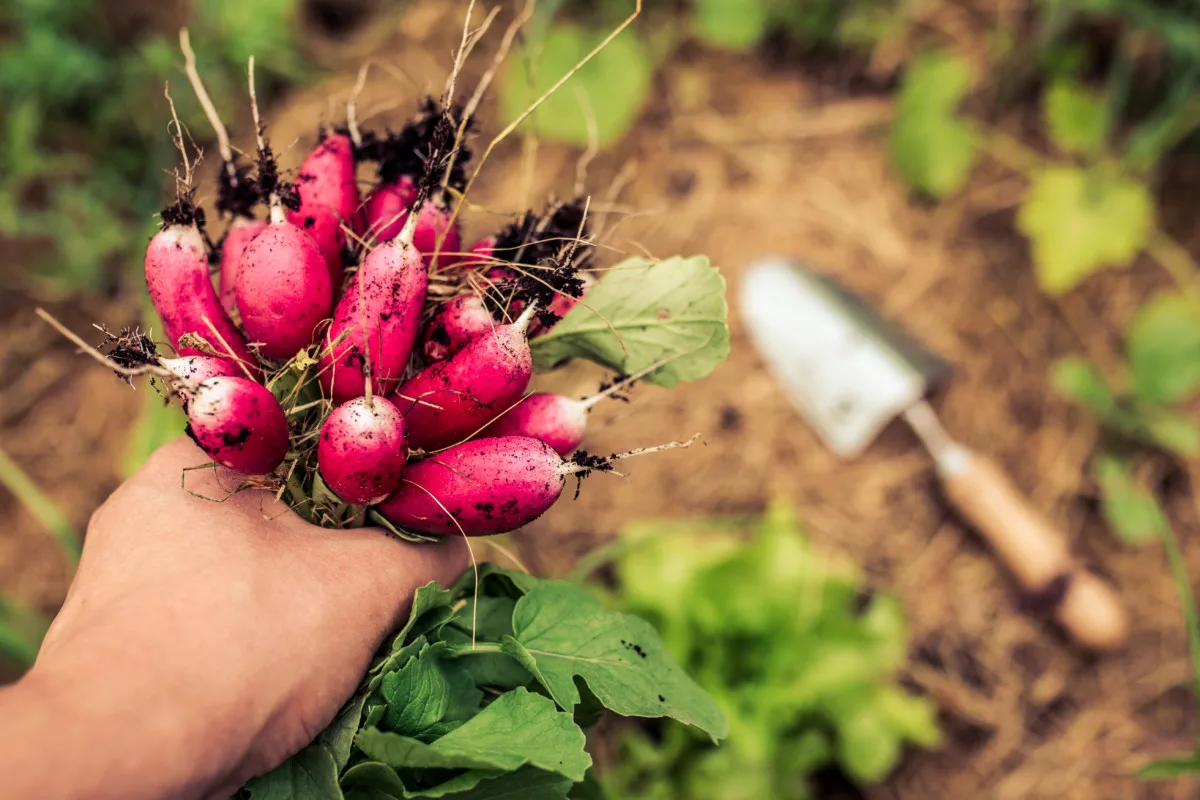
I absolutely adore radish sprouts. And even more than radish itself, I enjoy eating the seed pods before they become mature. Pickled radish pods are the absolute best.
One question though, before we dig on: did you know that radish leaves are edible?
Again, these vegetables that you can eat from root tip to seed, are an incredible addition to your emergency garden.
Be sure to always have some radish seeds on hand.
Related reading: How to Grow Your Best Radishes Yet – Seed To Table In 25 Days Or Less
11. Spinach
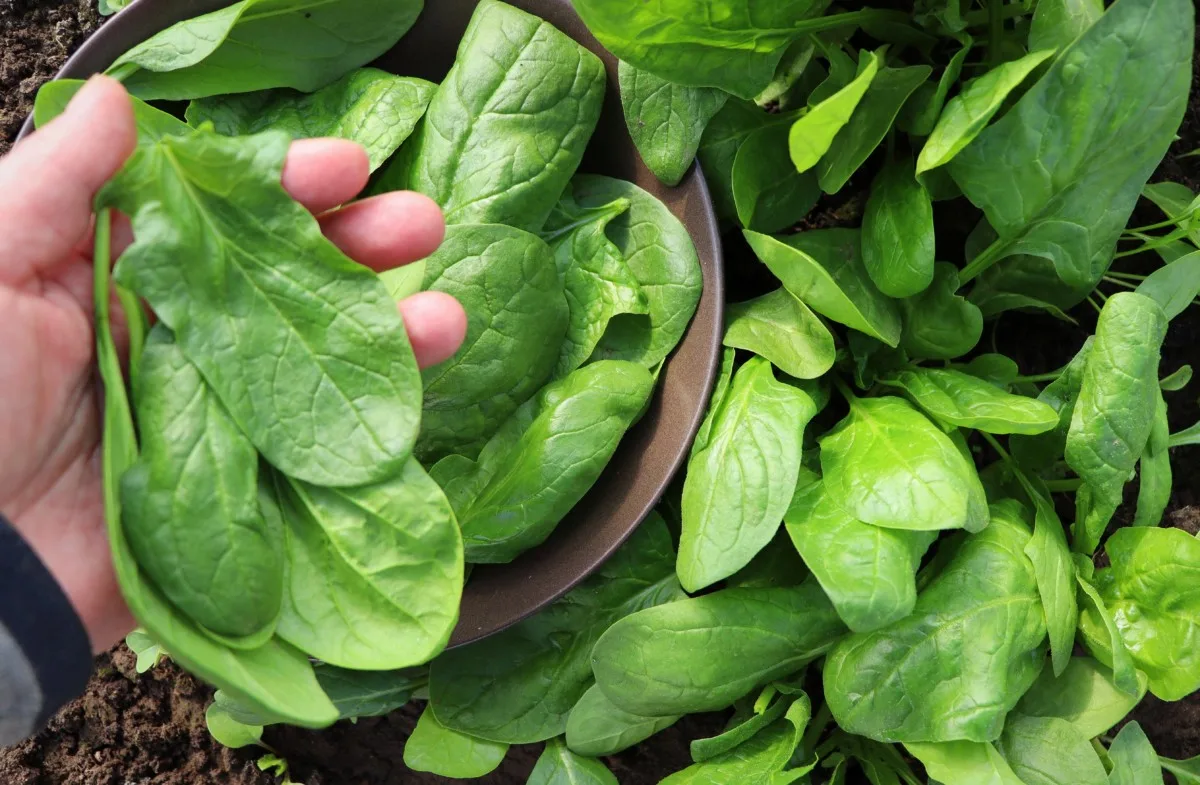
If you don’t have a lot of space to grow veggies, choose ones that germinate fast and grow quickly. Spinach, for example, is generally ready to harvest in 35-45 days, depending on the temperature and variety.
Young leaves can be plucked as soon as the rosette has 5-6 leaves.
Spinach gets bonus points for not minding being grown in a container. In fact, it probably grows better that way.
Planting More Vegetables In Your Emergency Garden
While all of the above are excellent choices of vital greens, they are more of a supplement to your diet, rather than the mass.
In order to be truly prepared for an emergency, it makes perfect sense to have other food squirreled away for uncertain times. Meredith has a common-sense prepping guide for ordinary people that you absolutely must read. Combine that stocked pantry with gardening and you’re sure to make any emergency experience a more pleasant one.
12. Carrots
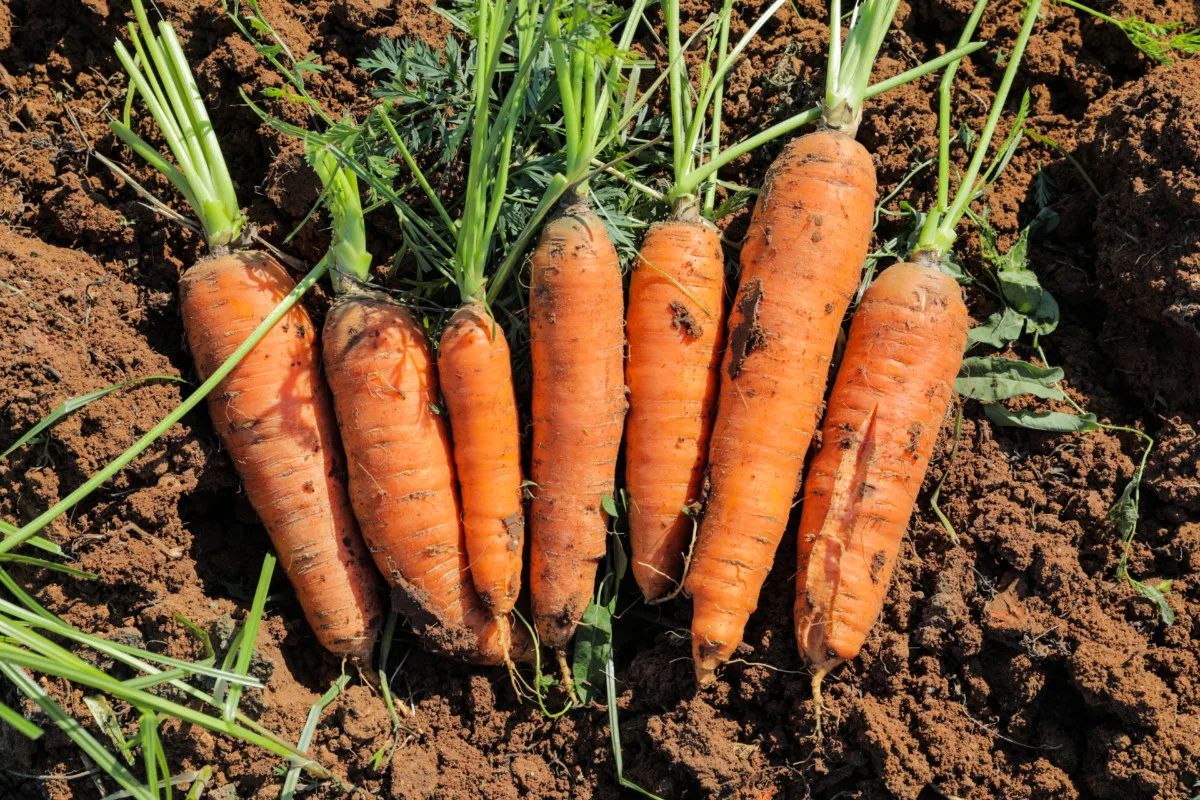
Later on, we’ll discuss regrowing food from scraps. Carrots are one of those veggies that fit the bill. You won’t necessarily want to do this for their taproots, but rather for their nutritious leafy greens.
Yes, you should be eating your carrot tops every chance you get.
You all know by now that fresh carrots not only taste great fresh from the garden, just wipe off that healthy soil and chomp away. Carrots are also good for your eyes, your heart, your brain, your digestion and much more.
In my experience, carrots aren’t among the easiest garden crops to grow, it depends a lot on the soil. Check out Rural Sprout’s guide on how to grow your best carrots ever – from seed to harvest and you’ll be well on your way to an abundant gathering.
13. Garlic
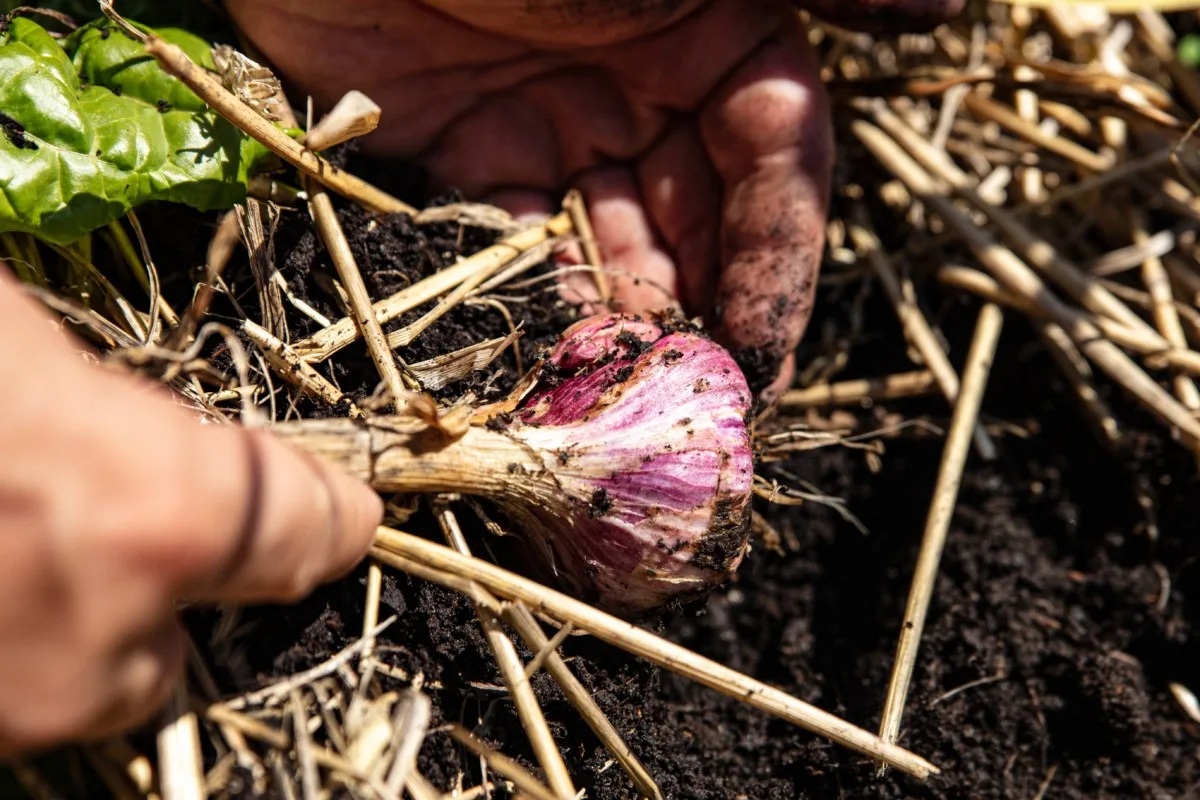
Garlic is one of the mainstays of natural health remedies.
It already has enough press of its own, so I’ll just ask you to check out the following articles for a more thorough investigation:
- How To Grow Garlic in Pots – Step-By-Step
- Harvesting Garlic Scapes & 15 Recipes You Need To Try
- How To Harvest, Cure & Store Garlic So It Lasts 8+ Months
- Honey-Fermented Garlic – The Easiest Fermented Food Ever!
- How To Make Lacto-Fermented Garlic + 5 Ways To Use It
14. Mushrooms
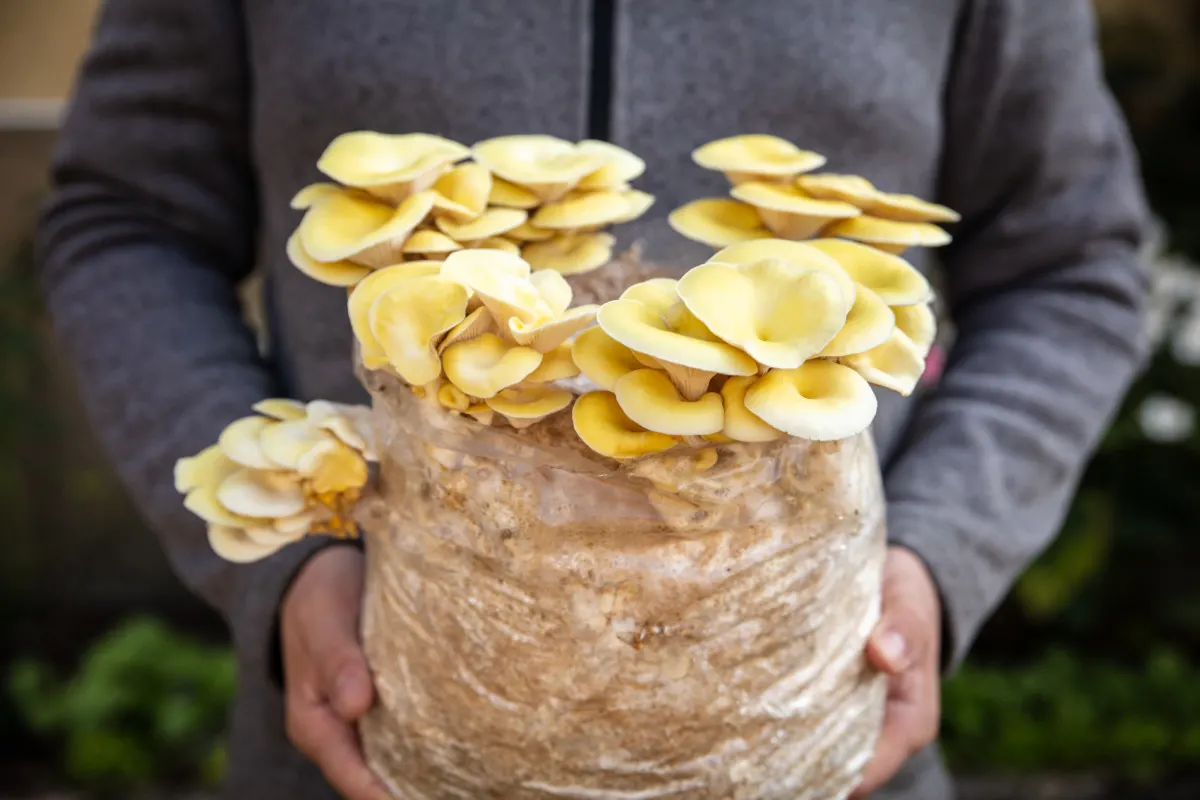
There’s also a lot of talk about mushrooms lately. Some folks even think they could save the world.
I don’t know about that, but what I do know, is that mushrooms are relatively easy to grow and they can provide additional nutrients that vegetables do not, including vitamin D.
Here are my top ten reasons for growing mushrooms at home.
15. Parsley
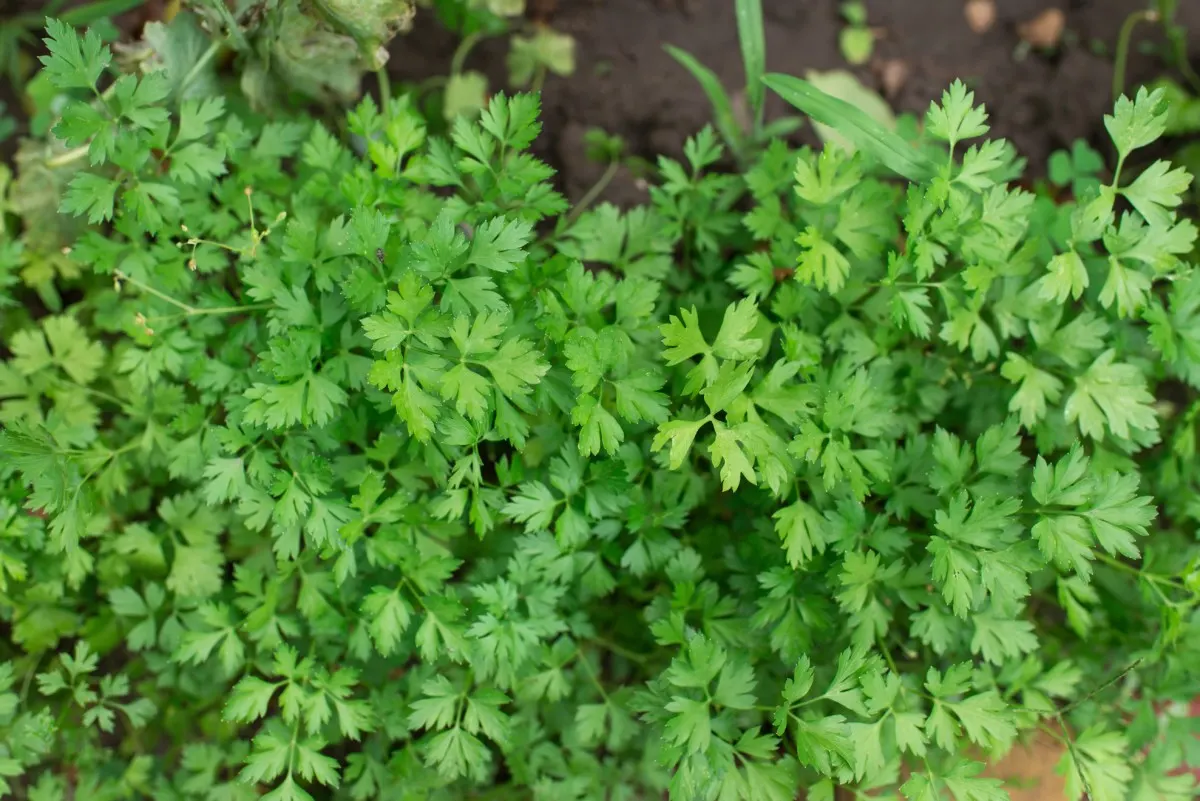
You can choose to grow parsley on the countertop, or you can let it run amuck out in the garden. Either way, it will enhance your diet with those same vitamins of A, C and K.
If you are into the medicinal properties, the antioxidants and the essential oils, read this article before scrolling down.
And if you are after all the ways it can flavor your life, find out all the ways to eat parsley here. Hint: it’s not just a garnish.
While parsley is a slow-growing plant, they are very determined vegetables. In fact, they are hardy biennials that can even survive the snow, so long as you cover it with a blanket of mulch. If you leave the roots in the ground, you can even dig them up all throughout winter, just as you can do with carrots and parsnips.
16. Potatoes
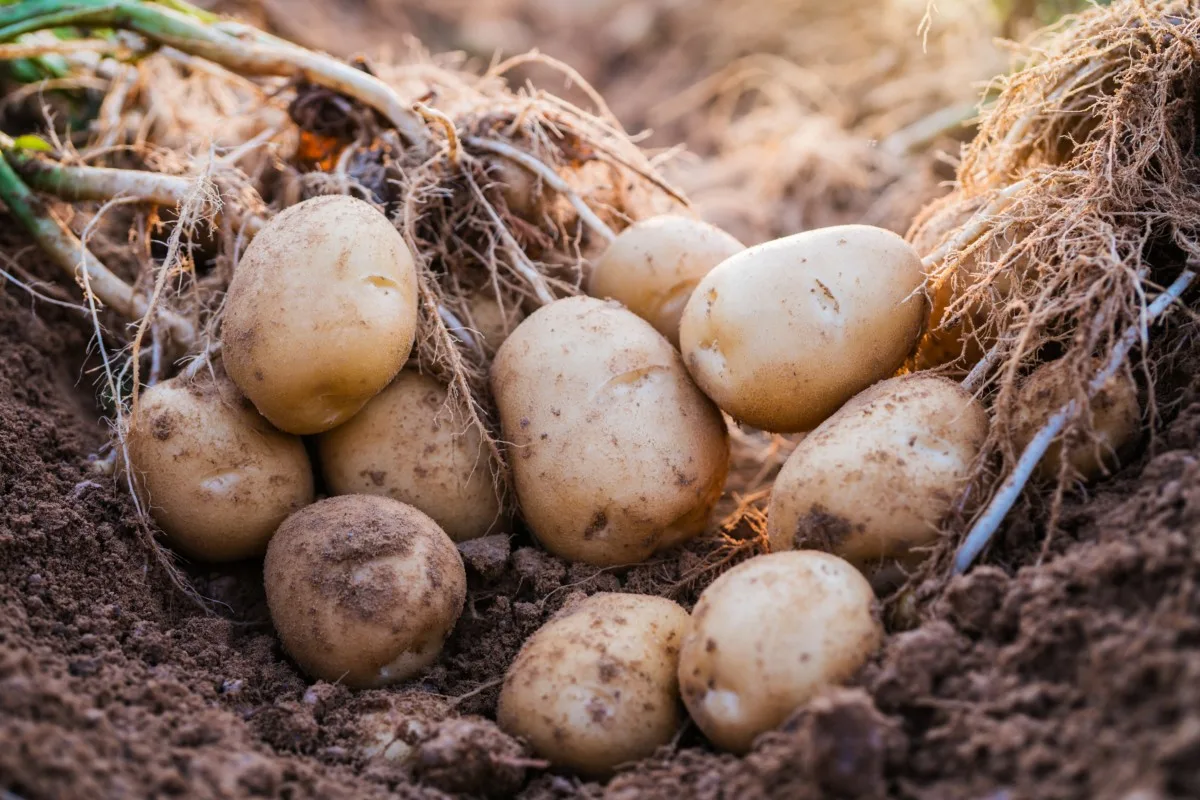
Potatoes aren’t exactly known for being rich in vitamins and minerals. But let me tell you that if you eat potatoes with the skins on, you are doing yourself a favor. Provided that they are grown organically, of course.
Growing potatoes is really quite easy. Best of all, you can even propagate store-bought spuds.
You can grow them in burlap bags, wire cages, raised beds, no-dig gardens, 5-gallon buckets, cardboard boxes, barrels, straw bales. Use your imagination and get creative here. As long as you encase them in some sort of growing medium which is free from light, they will start growing.
However, if it doesn’t rain, it may be up to you to provide some moisture for them.
Learn how to chit your potatoes, store your potatoes and freeze your potatoes for many meals to come.
17. Turnips
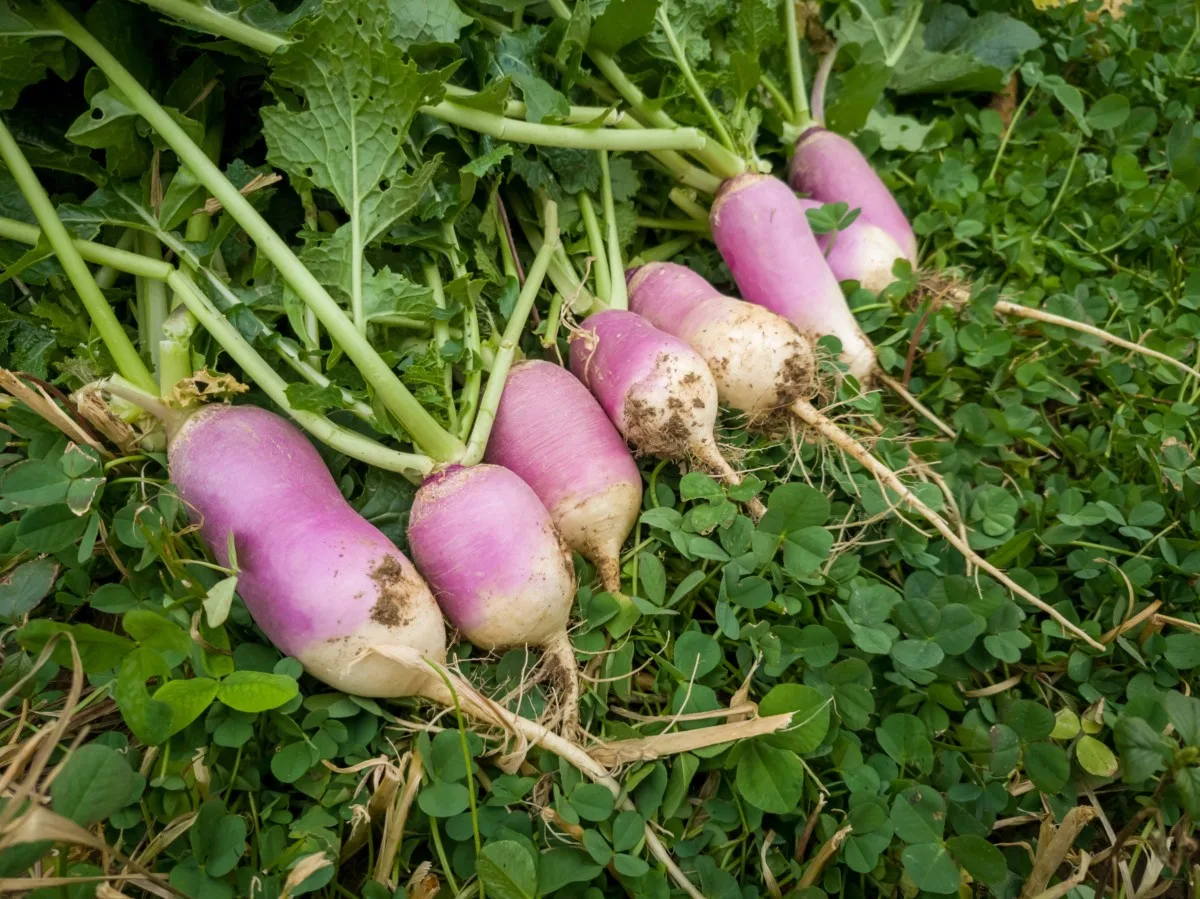
I know, turnips might be the one vegetable on this list that turns up your nose. Hear me out for a few seconds and I might give you reason enough to give them a second chance.
For starters, you can use every part of the plant. Turnip greens? Yes, please!
Turnips, in addition to bone broth, play a vital role in maintaining strong bones. One cup of turnip greens contains a heck of a lot of vitamin K, some say 600% of the daily recommended value.
How amazing is it to grow your own vitamins and minerals?!
Given the chance, turnips can be harvested from spring, into summer and late fall. They support the heart and cardiovascular system, promote iron absorption and boost the immune system. What’s not to love? Plus, they taste great, raw, grilled, mashed, steamed, sautéed, roasted or boiled.
It’s about time you gave turnips a chance.
18. Zucchini
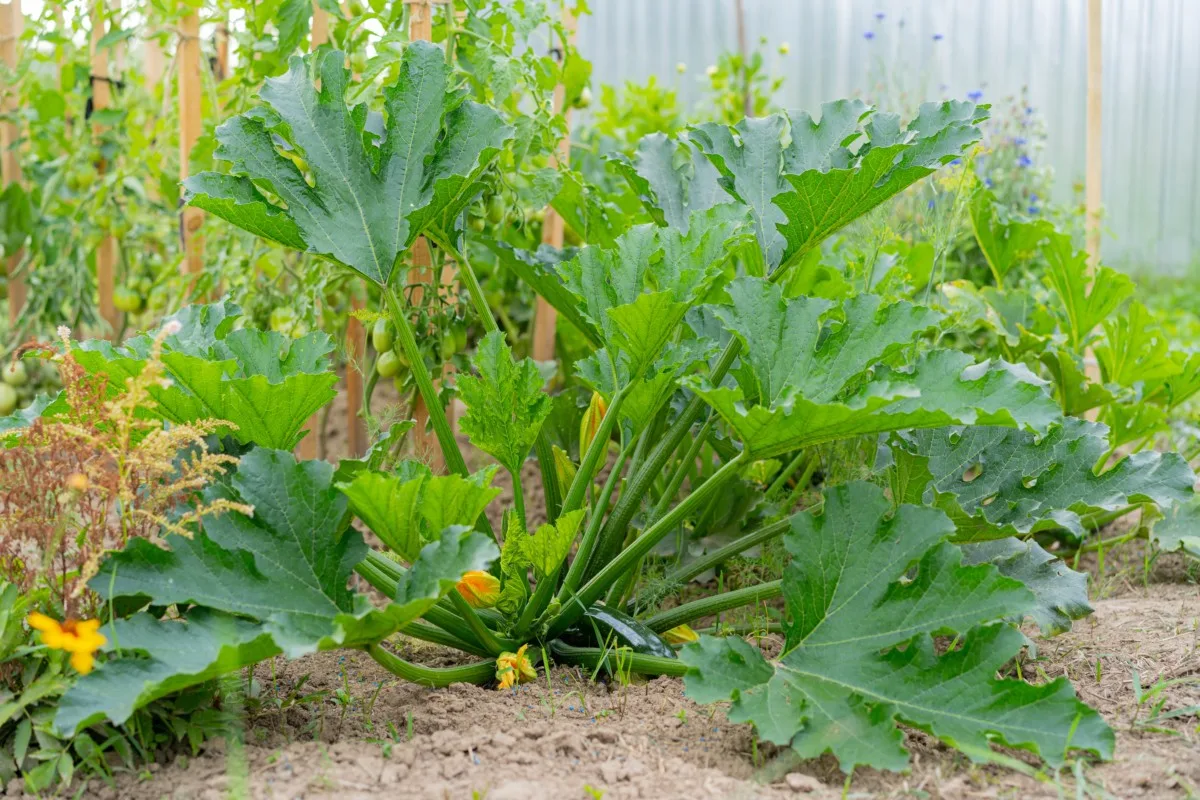
In an emergency garden, you’ll be cheering for your plants to grow. When it comes to zucchini, you can pretty much plant it and forget about it.
They do come with their potential problems, but by and large, you’ll receive a glut of zucchini from just a few seeds.
Assuming that all goes well during the growing season, you may then grab the opportunity to save up to 500 seeds from a single fruit.
It’s pretty much as easy as this: sow some seeds in the ground, water, wait, weed and watch them flower. Eat some baby zucchini when they reach 5-7″ and save some more for later. If you aren’t keeping a close watch, they may even extend to 3′ or more.
When a single zucchini takes a few days to eat, you know you are doing something right.
19. Herbs – Spice and Medicine
Here’s another what if…
What if you have seasonal allergies and no access to a pharmacy? How about a sprained ankle or a bee sting or a spider bite? Do you have some basic first aid skills to take care of yourself in an emergency situation?
People have somehow survived tougher situations than what we are going through now. I’d like to think that it had to do something with the will to survive, as well as knowing a thing or two about plants.
Personally, my husband and I forage for at least 30 local plants which we save and dry for teas, spices and tinctures. It’s more than what we have growing in our garden!
Yet, having access to some herbs, wild or cultivated, doesn’t have to take a lot of space or energy.
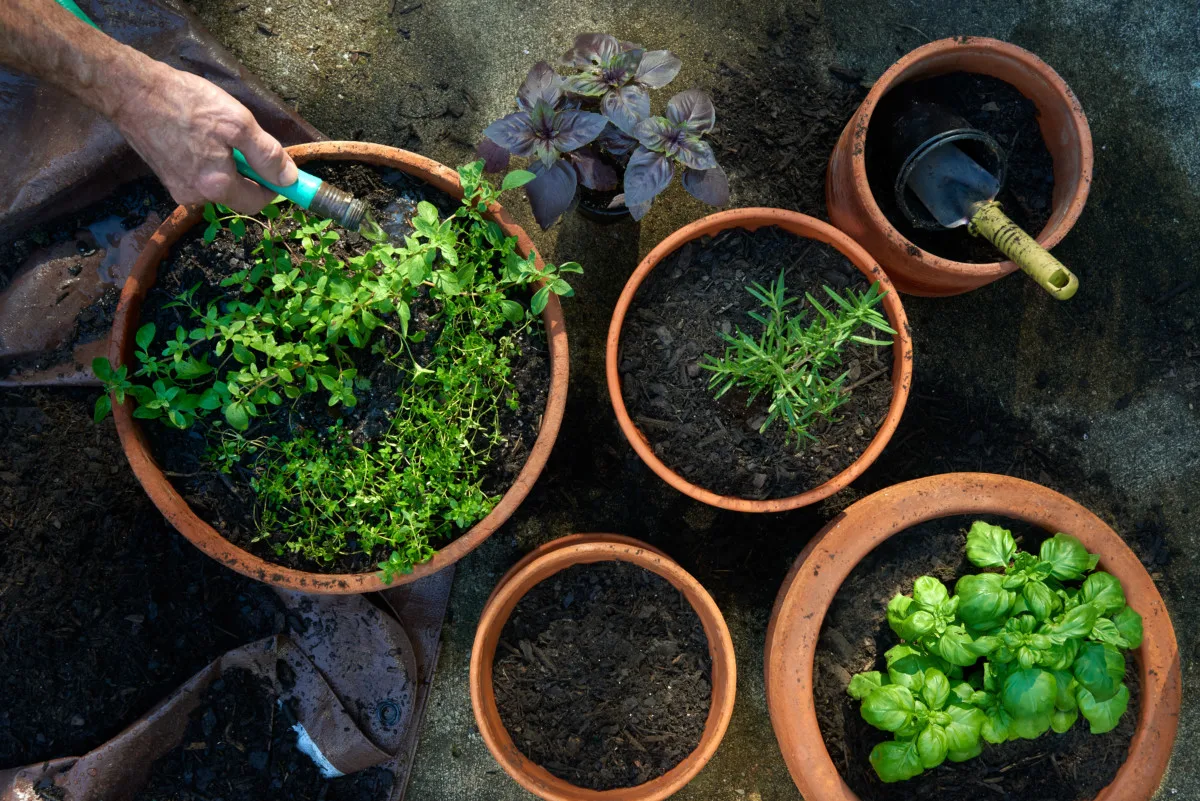
Here are some herbs you might consider cultivating in your emergency garden:
- basil
- chamomile
- lemon balm
- mint
- oregano
- rosemary
- sage
- thyme
- yarrow
If the thought of healing yourself brings a satisfied smile to your lips, you might also enjoy browsing through Lindsay’s article on 7 medicinal plants and how to use them.
Planting an Emergency Garden In Containers
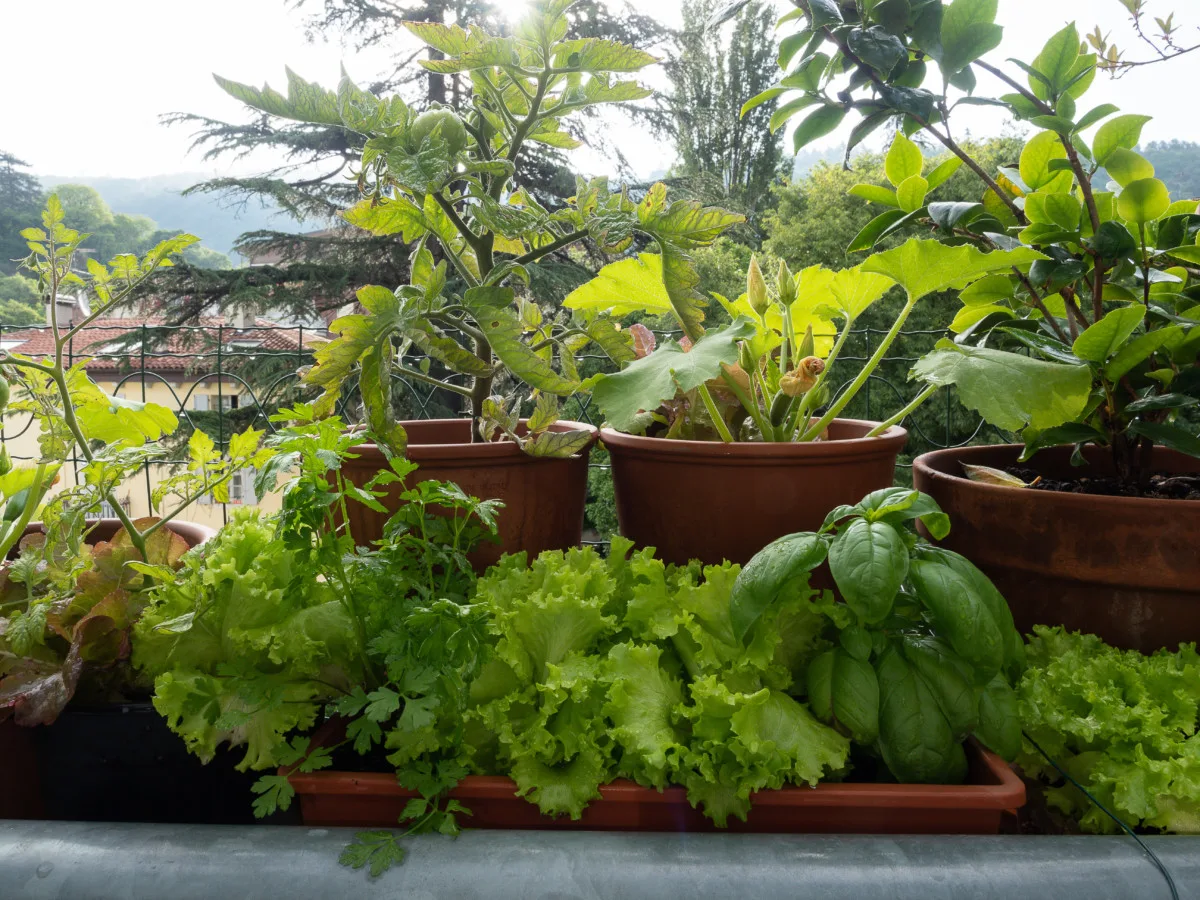
Did you know you can even grow an emergency garden with leftover containers you have laying around?
Before planting, just be sure to wash and sterilize them, to ensure they are ready for a good quality potting soil and seeds.
One of the great things about container gardens is that you can move them around to suit your needs and the needs of the plants. Which means they can be out of sight and out of mind in a flash.
Containers also happen to be a fantastic way in which to grow herbs, many of which can be grown inside on your kitchen counter.
When all else fails, you can regrow many vegetables from scraps.
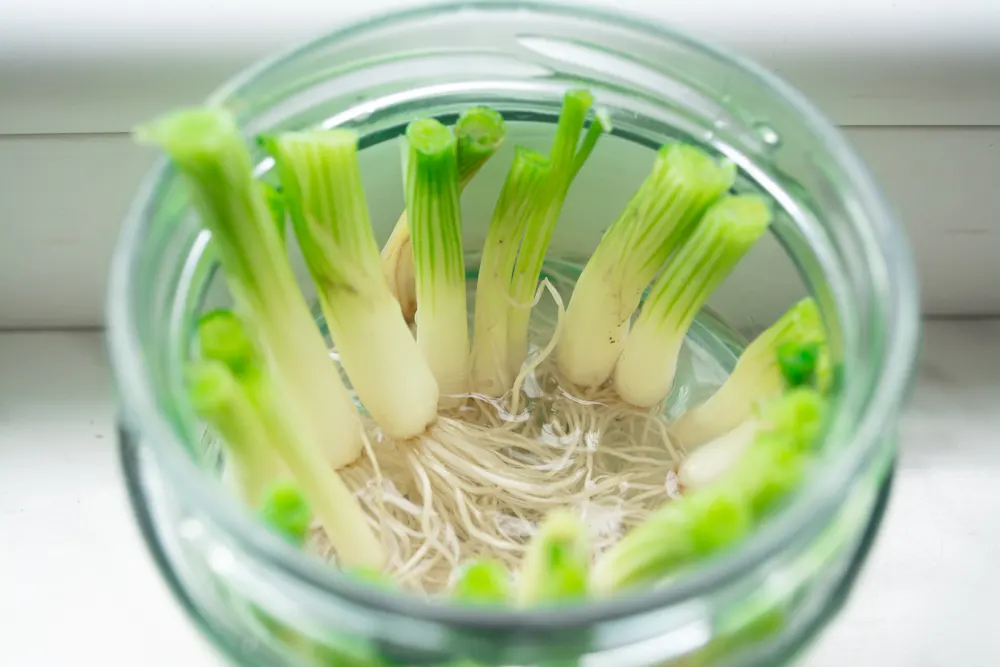
In a true emergency situation, or simply for the enjoyment of being thrifty and watching things grow, you can also reincarnate some of your vegetables.
Among these veggies you can regrow from scraps are:
- potatoes
- sweet potatoes
- celery
- fennel
- onions
- carrots
- beets
- cabbages
- herbs such as mint, cilantro and basil
The internet is abound with thousands of articles on re-growing food, why not give it a try?
At the same time, don’t toss those scraps in the bin, or on the compost pile, just yet.
Don’t be fooled by so-called seed shortages.
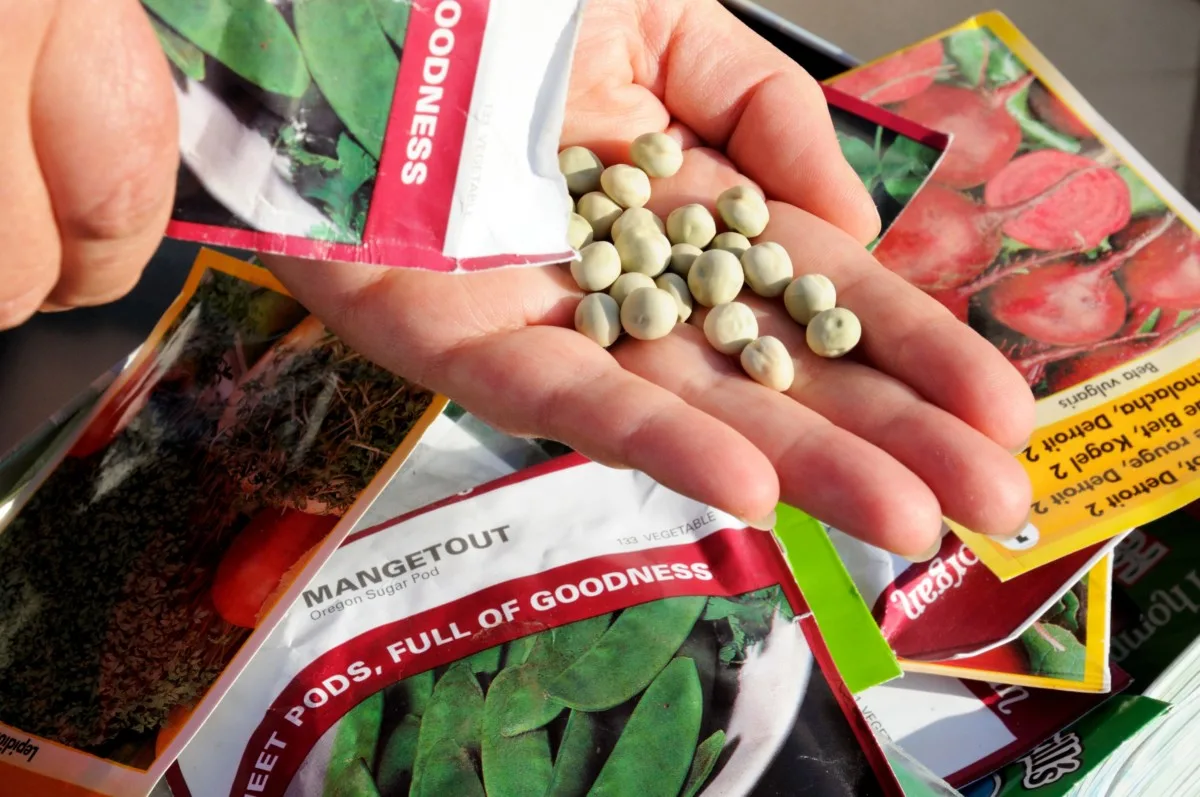
Now, that it’s time to start planning your garden, you may encounter some difficulty in obtaining seeds. Let me remind you, it is just a perceived hardship. Seeds can be found in many places – not just online. And even online these shortages are usually temporary.
Seeds can be bought at local stores and garden centers, grocery stores, markets and the like. You can go to seed swaps or trade online. Maybe you even have a packet of old seeds sitting in the back of a drawer. Perhaps their germination rate won’t be the best, but if you can get one plant to grow, that’s still a chance.
Never give up. There are always seeds to be found.
It seems that the whole world has a renewed interest in gardening.
What if now is the best time to start tending to your future?
It all starts with a single seed.

Get the famous Rural Sprout newsletter delivered to your inbox.
Including Sunday musings from our editor, Tracey, as well as “What’s Up Wednesday” our roundup of what’s in season and new article updates and alerts.

